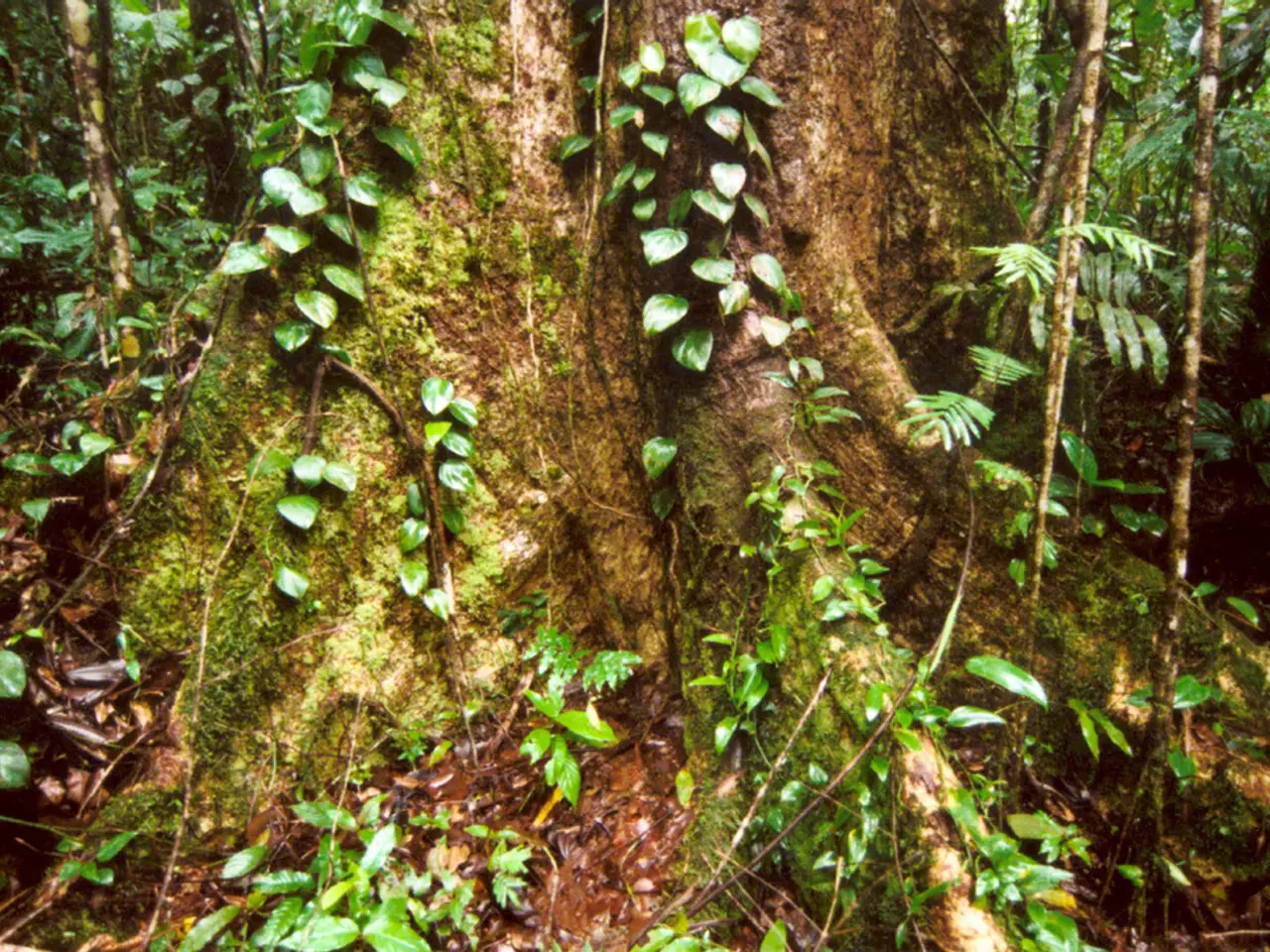Bonsai: Roots Wrap Around Rock in Neagari Style, Showcasing Root-Stone Integration
In the captivating world of bonsai, one style stands out for its unique charm and intricate beauty - the Neagari Bonsai. This style, characterised by exposed roots, is a delicate dance between a tree and a rock, a harmonious union that evokes a profound sense of connection to the natural world.
At the heart of Neagari Bonsai care lies the recognition of the importance of rock-dry spells. These periods play a pivotal role in maintaining a delicate balance between watering and humidity levels. It's a precarious equilibrium where the tree's very survival hangs, navigating the rocky terrain with precision in watering frequency being paramount.
The balance is further refined by the subtle play of light and shadow. The tree's leaves and the rock's crevices create an intricate interplay of textures and tones, adding depth and dimension to the display.
By carefully selecting rocks that complement the tree's shape and size, the bonsai artist can create a sense of harmony and unity. This unity is a delicate dance, where the gentle curves of the tree's branches and the rugged contours of the rock blend in perfect symphony.
Common tree species used for Neagari Bonsai include the Japanese azalea (Rhododendron indicum Koyo), Junipers such as Kishuu Juniper, and Premna microphylla. These species are favoured because they possess strong, attractive root systems that can be safely exposed and sculpted to create the dramatic root features characteristic of the Neagari style.
The characteristics that make these species suitable for Neagari Bonsai include hardy, well-developed root systems, good adaptability to root pruning and root exposure, an aesthetic appeal of roots and trunks, and tolerance to outdoor conditions.
When designing a Neagari Bonsai display, consider the pedestal or stand, accent plants, decorative rocks or gravel, and other elements to create a visually appealing and harmonious presentation. Perched atop a pedestal or nestled within a carefully crafted landscape, a well-designed Neagari Bonsai display showcases this harmonious union, evoking a sense of serenity and wonder.
Providing optimal lighting conditions is crucial to promote healthy development and prevent scorching. Bright, indirect light is ideal. Through deliberate pruning, Neagari Bonsai masters sculpt their trees into breathtaking works of art, carefully refining branch structures and leaf arrangements to accentuate the dramatic interplay between the roots and rocky base.
Frequently asked questions about Neagari Bonsai include whether multiple tree species can be used together, how often to mist the plant to maintain humidity, whether Neagari Bonsai can thrive in indoor low-light conditions, whether artificial rocks or stones can be used, and how long it takes to develop a mature Neagari Bonsai.
Common challenges in creating and caring for Neagari Bonsai include root damage, inadequate rock selection, poor root-to-rock integration, insufficient humidity, and inadequate watering. These challenges can be addressed with careful planning, attention to detail, and a deep understanding of the tree's needs.
Fertilizing with a well-balanced regime is vital to support the tree's growth and development. Seasonal fluctuations, soil composition, tree species, and watering schedule are key factors to consider. To achieve a harmonious balance, bonsai enthusiasts can employ techniques like gradually introducing roots to the rock surface, utilizing specialized training pots, pruning and shaping roots, selecting tree species with strong root systems, and providing ideal growing conditions.
As we tend to our Root-over-Rock Bonsai, we must acknowledge the intricate dance between water and air, where the subtle nuances of humidity and hydration can either nurture or undermine our creation. In building a harmonious balance, we find the essence of life, where the tree's survival hangs in the precarious equilibrium of moisture and dryness.
In this delicate dance, the Neagari Bonsai stands as a testament to the beauty of life and the power of harmony, a living sculpture that transcends the boundaries between living and inanimate, organic and mineral, creating a sense of timelessness and serenity.
The harmonious display of a Neagari Bonsai can beautifully integrate into various aspects of one's lifestyle, serving as a captivating centerpiece in both home-and-garden settings and indoor spaces. By carefully selecting rocks, arranging accent plants, and designing thoughtful lighting conditions, a Neagari Bonsai can transform a space into a tranquil, inviting garden paradise that accentuates the delicate balance between life and the mineral world.





